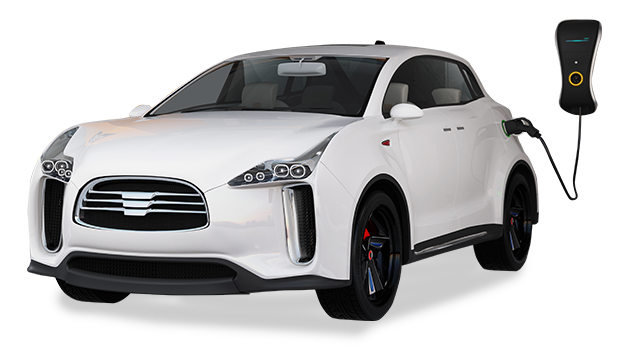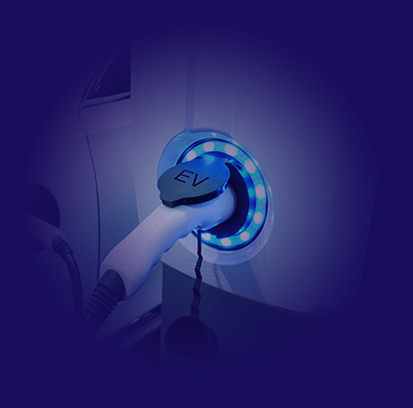Back to the future- in an EV
#DisruptionDialogues

Henry Ford and Thomas Edison's fantasy of electrified transportation is becoming a reality 100 years after petrochemical fuels ruled the roost. Like the tortoise in the popular children's fable, the EV is slowly but surely winning the race as vehicle of the future. But even as you picture yourself cruising down the highway in a snazzy red EV, the big speed bump in the road suddenly rises up to hit you- the charging station! And all the challenges that come with it. While pundits admit the shift to a fully electric fleet will not happen overnight, the near-term implications for grid management and charging stations are already pretty significant. The integration of renewable energy and EVs draws the future mode of transportation. The more penetration of EVs and RCIs means more reduction of carbon emissions and fossil fuel consumption. However, there are some challenges for the deployment of renewable energy-based infrastructures due to their natural fluctuation. Currently, the use of electric vehicles is still dominated by China, France, Japan, Norway, and South Korea, most of which are developed countries. However, the trend also has started to influence many developing countries like Brazil and parts of Africa.With growing concerns of climate change and unreliable fuel market, the world is moving towards an electric-based transportation system, one that entails a country to overhaul major infrastructures, fund research, change government regulations, and adapt available resources to transform its gasoline-based transportation system to an electric one.
The missing link
Staying relevant in a disruptive energy landscape has never been more crucial for utility companies who are seizing new opportunities and investing smartly in future revenue streams linked to EVs and their charging requirements. A perfect example of the disruptive nature of the energy field is the burgeoning demand for EVs and the opportunity it offers electric utilities for timely diversification of their offerings. The nature of EV charging demands that vehicles and fuelling infrastructure be connected in a way they never had to be with petrochemicals.
In fact it was rather mystifying to most people as to how EV charging stations performed as an asset class once deployed. With the rise in the demand for electric vehicles, the need for a reliable charging infrastructure increases to accommodate the rapid public adoption of this type of transportation. Simultaneously, local electricity grids are put under pressure and require support from naturally abundant and inexpensive alternative energy sources such as wind and solar. Therefore, the world has recently witnessed the emergence of renewable energy-based charging stations that have received great acclaim. Wind and solar energy are good sources for EV charging infrastructure. However, their integration with EVs, V2G charging facilities, and ESS can form RCI with a micro grid plan for network charging. That said, there is a growing consensus that millions of vehicle batteries will one day serve as energy resources beyond V1G managed charging, to power buildings and micro grids and feed energy back into the bulk power system.
Automotive manufacturers have begun to team up with technology providers and service partners to solve the fuelling challenges that came with EVs, as well as the operational challenges faced by charging as a business. The market for EVs is growing, and if handled smartly, it can create a win-win for utility companies and environment regulators who are pushing for clean energy sources. But there are some basic questions that crop up in conversations around EV's. When you are not at home where do you charge? Who provides it and how much will it cost? How will you ensure that you will not be stranded between charging times?
The Road Ahead
The challenge ahead for utilities will be to develop an innovative plan that supports EVs, balances the load on the grid and keep costs down for customers. And while there are challenges and costs of upgrading the grid to handle EV adoption they're not unmanageable. Even though it may take a while for EV's to cause major grid disruption, smart utility companies are already introducing innovative solutions to balance the load on the grid as well as keep costs low using this period of relatively slow growth to lay a strong foundation for an integrated power grid- transportation system. Combining battery storage with EV charging stations can also have a significant impact. The stations can store renewable energy generation from those solar panels, or the batteries trickle charge from the grid at a lower rate and off-peak times. The batteries provide high power bursts needed while charging cars instead of the grid. While today's grid impact from EV charging infrastructure is modest, demands could change rapidly. Utilities can reduce grid impact by counting on integrated software embedded in the EVs and charging locations. Integrated software allows utilities to have remote monitoring and control of the EV chargers. Operators can then aggregate and shift EV loads to balance the grid.

And apart from what's out there in the public domain, a lot of research activity related to charging and utility is happening especially in relation to energy consumption, and needs of the grid in real-time. Distribution system services obtained from EVs could eliminate transmission and pipeline system costs, improve energy security, and deliver multiplier benefits to the local community. Through the use of properly-sited charging stations and rate design price signals, utilities can stimulate the adoption of electric transportation and utilize it to build a cleaner, more resilient grid
By better integration of variable renewable energy sources it is possible to reduce curtailment, and avoid the need for new flexible natural gas capacity. That would reduce costs to limit greenhouse gas emissions and criteria pollutants. A more meaningful level of deployment can be reached, through proactive planning by utility companies, regulators, and other stakeholders. Vehicle manufacturers, local elected officials, and people with influence over local building and planning must also be involved.
- Tune into:
-
 Apple
Apple
-
 Spotify
Spotify
-
 Amazon Music
Amazon Music

